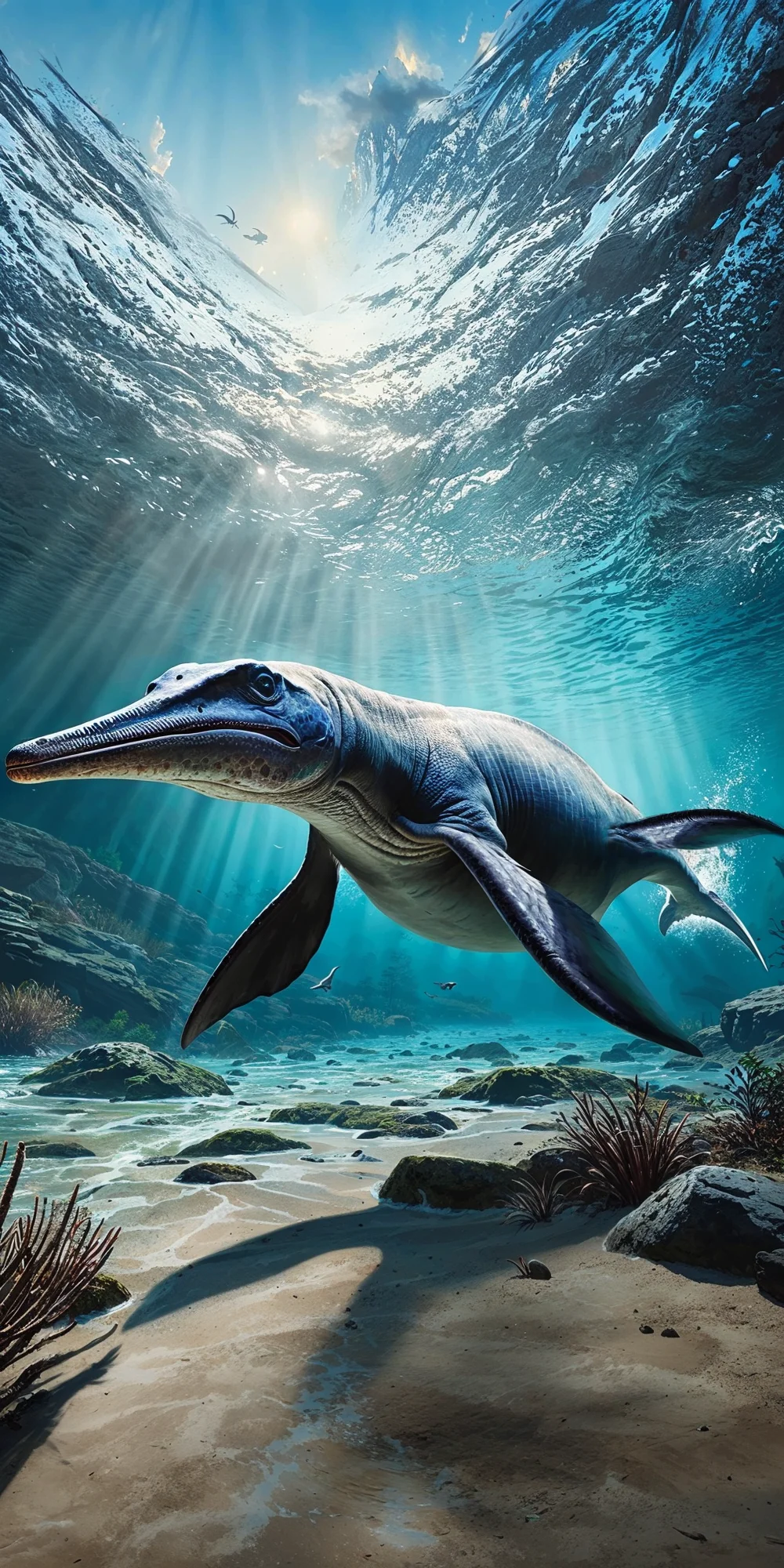The Ichthyosaurus
The Ichthyosaurus, known for its dolphin-like appearance, was a marine reptile that lived during the Mesozoic Era. It had a streamlined body with a long snout, sharp teeth, and a powerful tail for swimming. Ichthyosaurus had large eyes adapted for low light conditions, allowing it to hunt effectively in the deep ocean waters.

| Ichthyosaurus | |
|---|---|
| Size | Up to 20 feet (6.1 meters) |
| Weight | Unknown |
| Speed | 22 mph (35 km/h) |
| Key Strength | Speed and agility in the water |
| Biggest Weakness | Vulnerable on land |
| Scientific Name | Ichthyosaurus |
| Family | Ichthyosauridae |
| Habitat | Marine |
| Geography | Worldwide oceans during the Jurassic period |
| Diet | Fish and squid |
| Lifespan | 20 years - 30 years |

The Ichthyosaurus
The Ichthyosaurus, known for its dolphin-like appearance, was a marine reptile that lived during the Mesozoic Era. It had a streamlined body with a long snout, sharp teeth, and a powerful tail for swimming. Ichthyosaurus had large eyes adapted for low light conditions, allowing it to hunt effectively in the deep ocean waters.
Fun Fact: Ichthyosaurus gave birth to live young, unlike most reptiles that lay eggs, making it one of the few marine reptiles known to exhibit viviparity.
| Ichthyosaurus | |
|---|---|
| Size | Up to 20 feet (6.1 meters) |
| Weight | Unknown |
| Speed | 22 mph (35 km/h) |
| Key Strength | Speed and agility in the water |
| Biggest Weakness | Vulnerable on land |
| Scientific Name | Ichthyosaurus |
| Family | Ichthyosauridae |
| Habitat | Marine |
| Geography | Worldwide oceans during the Jurassic period |
| Diet | Fish and squid |
| Lifespan | 20 years - 30 years |
Ichthyosaurus Matchups
We use AI to simulate matchups between the Ichthyosaurus and other animals. Our simulation considers size, strength, and natural predatory behaviors to determine the most likely outcome.
Ichthyosaurus: Diet, Predators, Aggression, and Defensive Behaviors
What did Ichthyosaurus eat?
Ichthyosaurus were carnivorous marine reptiles that primarily fed on fish, squid, and other small marine animals. They had sharp teeth adapted for catching and consuming their prey, and they were well-suited for a diet of mainly aquatic species.
Did Ichthyosaurus have any predators?
While Ichthyosaurus were apex predators in their underwater ecosystems during the Mesozoic Era, they themselves were vulnerable to larger marine reptiles such as the Pliosaurus and Liopleurodon. These formidable predators could pose a threat to Ichthyosaurus individuals, especially the young and weaker members of the species.
Were Ichthyosaurus aggressive?
Ichthyosaurus were not inherently aggressive towards other creatures, as their main focus was on hunting and consuming prey. However, they may have displayed territorial behavior or aggression when defending their territory or competing for resources such as food and mates.
Did Ichthyosaurus fight?
Ichthyosaurus were known to engage in conflicts with one another, especially during mating seasons or when competing for resources. These skirmishes could involve displays of dominance, physical aggression, and even fighting behavior, as seen in many animal species.
How did Ichthyosaurus defend themselves?
Ichthyosaurus used a combination of physical adaptations and behavioral strategies to defend themselves against potential threats. Their sleek, streamlined bodies allowed them to move swiftly through the water, while their sharp teeth and powerful jaws were effective tools for capturing and subduing prey. Additionally, they may have relied on their speed and agility to evade predators and escape dangerous situations.
What was Ichthyosaurus' biggest weakness in a fight?
Despite their formidable hunting abilities and predatory nature, Ichthyosaurus had certain vulnerabilities that could be exploited by larger or more powerful adversaries. Their relatively small size compared to some other marine reptiles made them susceptible to being overpowered in a physical confrontation, and their need to surface for air periodically could also be a weakness when facing aquatic predators.
Fun Fact: Fossil evidence suggests that Ichthyosaurus was a highly migratory species, with remains found in various locations across Europe and even as far as North America.
Fun Fact: The name "Ichthyosaurus" means "fish lizard" in Greek, reflecting its fish-like characteristics and reptilian classification.










